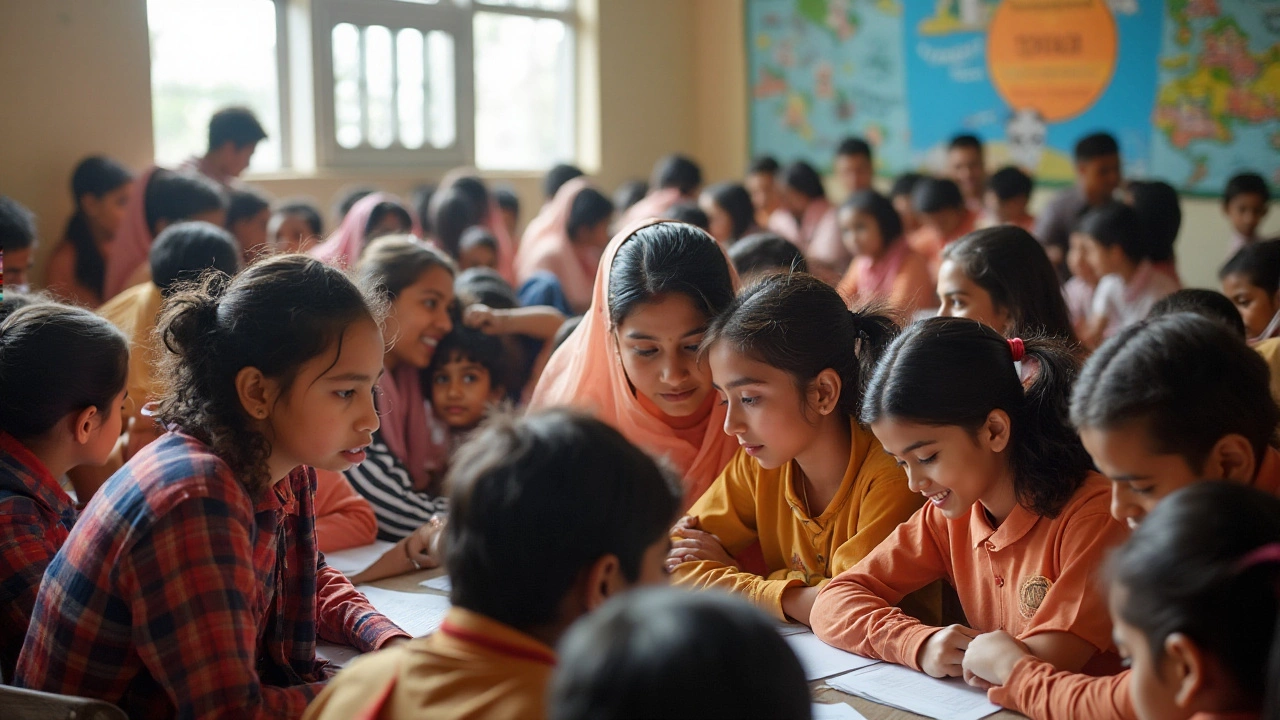CBSE Schools: What They Are and Why They Matter
If you’re a parent or student in India, you’ve probably heard the term CBSE school at least a few times. CBSE stands for Central Board of Secondary Education, a government‑run board that runs a huge network of schools across the country. The board’s syllabus is used by thousands of schools, and its exams decide the grades for classes 10 and 12. Because the CBSE curriculum is designed to be consistent nationwide, students can move between cities without worrying about big changes in what they learn.
Why do many families choose CBSE schools? First, the syllabus focuses on concepts rather than rote memorising, which helps students think critically. Second, the board’s exams are accepted by most Indian colleges, especially engineering and medical programs. Finally, CBSE regularly updates its textbooks to match new educational trends, so the learning material stays relevant.
Key Features of CBSE Schools
Here’s a quick snapshot of what you’ll find in a typical CBSE school:
- Uniform syllabus: All schools follow the same textbook series and guidelines, making it easy to prepare for board exams.
- Continuous and Comprehensive Evaluation (CCE): Instead of a single high‑stakes test, CBSE uses periodic quizzes, projects, and classwork to gauge progress.
- Science‑focused curriculum: Subjects like Physics, Chemistry, Biology, and Maths get extra attention, which is why many top IIT and NEET aspirants prefer CBSE.
- National-level exams: The board’s 10th and 12th exams are recognized by colleges across India, simplifying admission processes.
- Language options: While Hindi and English are compulsory, students can also pick a third language, giving flexibility in regional preferences.
One of the most talked‑about stories from the CBSE world is the rise of CBSE toppers. These students score above 95% in the 12th exams and often share their study hacks online. Checking out a post like “CBSE Topper: Stories, Rankings, and What Makes the Best Student Stand Out” can give you a realistic look at the mindset and routine that leads to success.
How to Pick the Right CBSE School
Choosing a school isn’t just about its name on a brochure. Here are some practical steps to help you decide:
- Look at results: Past board results give a clear picture of how well the school prepares students. Consistently high scores indicate strong teaching methods.
- Visit the campus: Talk to teachers, see the labs, and feel the classroom vibe. A school that encourages questions and projects usually nurtures deeper learning.
- Check extracurriculars: Sports, music, coding clubs, and debate teams round out a student’s education. CBSE schools often blend academics with activities that boost confidence.
- Ask about teacher qualifications: Experienced teachers who have cleared the National Council for Teacher Education (NCTE) exam tend to deliver clearer explanations.
- Consider location and fees: A convenient commute and transparent fee structure keep stress low for both parents and students.
If you’re still unsure, compare a few schools side‑by‑side on a simple spreadsheet. List items like student‑teacher ratio, lab facilities, and board exam pass percentage. Seeing the data in one place makes the decision easier.
Another helpful resource is the “Which School Syllabus Is the Hardest in the World?” article. It compares CBSE with other demanding curricula like IB and A‑Levels, giving you a sense of how tough the board can be and what extra support you might need.
In short, CBSE schools offer a stable, nationally recognised education that prepares students for higher studies and competitive exams. By checking performance records, touring the campus, and weighing extra‑curricular options, you can zero in on a school that fits your child’s goals.
Ready to start your search? Grab a list of nearby CBSE schools, set up visits, and keep an eye on the latest board updates. Good luck finding the perfect place to learn and grow!
CBSE Schools in India: Everything You Need to Know Before Choosing
Get the full scoop on CBSE schools in India—what makes them popular, how they work, and what parents and students should really know before making the switch.
read moreCBSE Schools in India: Which State Has the Most?
This article unpacks which Indian state tops the charts with the highest number of CBSE schools and what makes certain states a popular pick for parents and students. You’ll get a look at real numbers, see what drives these trends, and find out why location matters for CBSE education. Plus, there are practical tips if you’re hunting for a CBSE school. Discover how CBSE schools impact opportunities across various states. Packed with relatable stories and facts, this guide makes picking the right state and school easier for your family.
read moreTop-Ranked CBSE Schools in India: A Comprehensive Guide
In India, schools affiliated with the Central Board of Secondary Education (CBSE) are often sought after for their robust curriculum and comprehensive educational approach. With numerous CBSE schools across the country, identifying the most popular ones can be challenging. This article delves into the factors contributing to a school's popularity, highlights some renowned CBSE institutions, and provides tips for selecting the right school. Learn more about how these institutions stand out through their reputations, academic performances, and extracurricular activities.
read moreCBSE Schools Around the World: A Global Presence
The Central Board of Secondary Education (CBSE) is not only prevalent within India but has also expanded its reach internationally. Various schools around the globe offer the CBSE curriculum, allowing Indian expatriates and other interested students to access quality education. This article explores the locations, benefits, and unique features of CBSE schools existing outside of India. It also highlights how the CBSE system adapts to global environments and provides tips for parents considering this education system for their children.
read more


